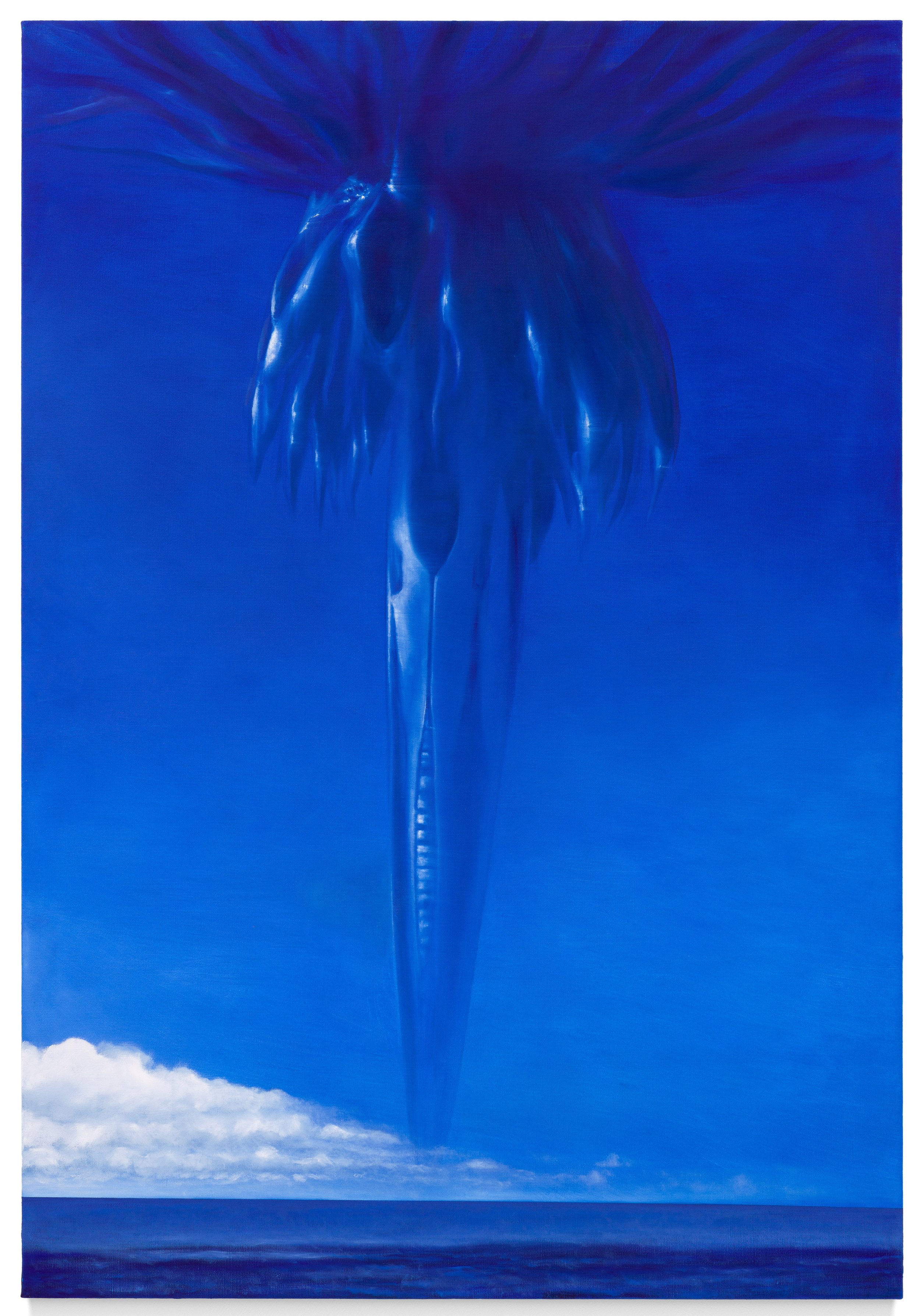Per Monstra Ad Sphaeram
29 January 2025 – 15 March 2025
Opening reception: Tuesday, January 28, 6–8:30pm
Make it stand out
Whatever it is, the way you tell your story online can make all the difference.
Sébastien Bertrand is pleased to present Per Monstra Ad Sphaeram, a solo exhibition introducing Mathis Gasser’s (Zurich, 1984) work for the first time at the gallery. This show complements the presentation held simultaneously at Artgenève.
The title ‘Per Monstra Ad Sphaeram’ (Through Monsters to the Sphere) captures the essence of art historian Aby Warburg's work. It suggests that the path from the monstrous ("monstra") to the order of the cosmos ("sphaeram") is achieved through the secularization and recontextualization of ancient motifs.
The exhibition presents seven paintings, most depicting spaceships and part of an ongoing, loose series with such flying or hovering objects. Needless to say - Gasser has a deep fascination with spaceships. They represent many things. They mean many things. They may be a projection of abstract ideas in this world.
In a text on Gasser’s work, Mortiz Schepper wrote: ‘The seemingly innocuous veneers of Gasser’s paintings seethe and function as much like chimaeras as the ships themselves: The exterior always trumpets itself with ornamental design, which serves as both a distraction from and a clue to the monstrosities behind the surface.’[1] ‘Gasser has written of ships as a potential expression of something hidden in the collective unconscious.’[2] The ships manifest and represent complex technology and engineering. Immobile, they appear like silent events of shapes with mysterious implications in the sky and on the painting.
[1] Moritz Schepper, Mathis Gasser, Artforum, 2019. https://www.artforum.com/events/mathis-gasser-245714/
[2] Mathis Gasser, Objects in the Sky, Brand New Life, 2019. https://brand-new-life.org/b-n-l/objects-in-the-sky/
Mathis Gasser, Invasion Ship, 2024
Oil on canvas, 145 x 100 x 3.4 cm./ 57 x 39 ¼ x 1 ¼ in.
Mathis Gasser, Cylon Basestar 2, 2024
Oil on canvas, 145 x 105.5 x 2.5 cm. / 57 x 41 ½ x 1 in.
For Gasser, images themselves are vessels that not just represent but contain and transport meaning. The depiction of ships is thus, in part, a reflection on the image and painting itself. Invasion Ship and Engineer Ship (Steven Messing) show large ships in blue skies. Invasion Ship features the mothership of the Apple TV-produced series Invasion as it appears at the end of season 1. Engineer Ship (Steven Messing) is from Steven Messing’s concept work for Prometheus (2012). Invictus is an ancient Imperial Altair-Class warship (Star Trek), measuring eight kilometres in diameter and comprised of three concentric rings around a central void armed with powerful weapons systems. The painting shows the structure both frontally and in close-up. Cylon Basestar 2 (from Battlestar Galactica) and USS Sulaco (from Alien) depict the respective ships in a more ‘scientific’ manner, as it could be found in a technical manual, once depicted from above and once from the side.
The source of these ships is not overly important, as they become something else once painted. They exist as ‘shapes’ on a surface and enter a vocabulary of visual and historical, science-fictional imaginations. Nowhere can Gasser’s interest in building a ‘vocabulary of ships’ be more evident than in the spaceship size chart paintings (as shown at Mamco in 2023). We will show one new such painting at Art Genève, concurrent with the exhibition at the gallery. Each ship is an imaginative vessel charged with a narrative or other potential. What is the ship’s purpose? What’s inside? What is their destination?
In Per Monstra Ad Sphaeram, spaceships represent, among other, humanity's ambition to explore the cosmos – a pursuit that carries both immense promise and inherent risks. This duality mirrors the complex emotions associated with Warburg's ‘monstra,’ which can symbolize the forces that lie beyond human control, both progress and chaos. Modernity from the Industrial Revolution onwards can be seen as a kind of monster generator and ground zero for multiple developments with immense ripple effects. Modernity is littered with both immensely successful and disastrous feats and everything in between. The ‘ad sphaeram’ (to the stars) part suggests a journey of intellectual and cultural exploration. By confronting and analyzing the ‘monsters,’ Warburg aimed to better understand human culture and history. It was through grappling with the seemingly irrational and disturbing aspects of human expression that he believed one could achieve true insight.
Gasser's spaceships might initially appear as ‘monstra,’ but they can also be seen as potential pathways to a new understanding of the cosmos or exploring the unknown. This transformative power echoes Warburg's belief that the study of ‘monstra’ can lead to profound insights into the human condition.












2024
Oil on canvas
145 x 110 x 3.5 cm. / 57 x 43 ¼ x 1 ½ in.
MG-2403